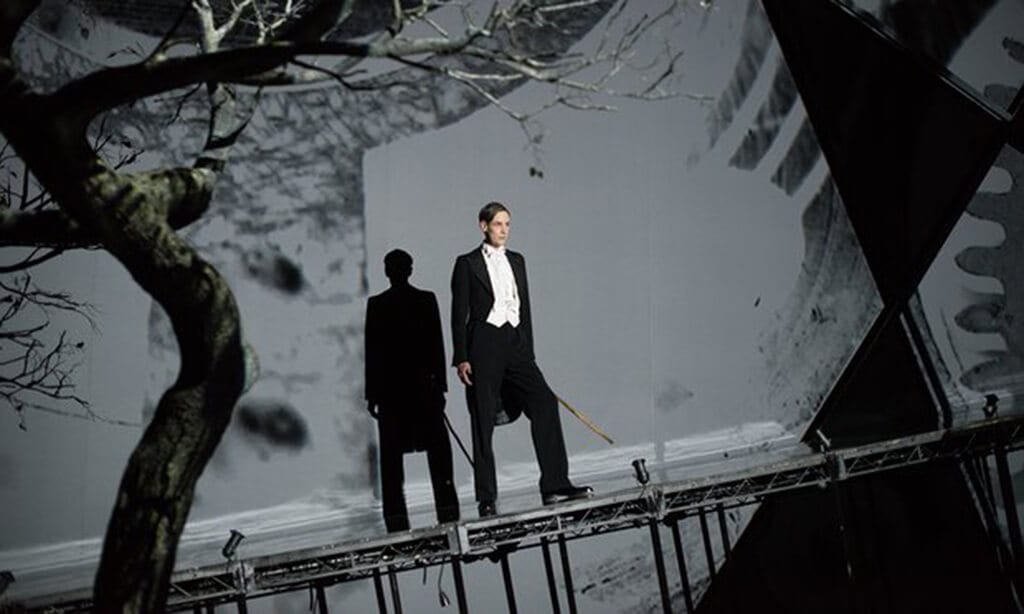Performances of Schubert’s late song cycle ‘A Winter’s Journey’ are usually deeply inward experiences: just the singer, a grand piano and accompanist and 24 songs offering varying shades of darkness, loss and despair to which the listener responds by turning inwards to the mansions of personal memory. In the face of such an intimate performance tradition it is a real act of bravery to try to externalise this wintry world in a dramatic representation. Yet in a fine collaborative achievement Hans Zender, Ian Bostridge, the Britten Sinfonia and director Netia Jones manage that rare thing – to add real value to a pre-existing masterpiece.
Musically this work is an elaboration of Schubert’s score rather than a re-composition. Zender rewrites the accompaniment with an exotic orchestral palette, sometimes evoking Mahler, and café-style orchestras of the Weimar Era, sometimes twelve-tone classical writing or even Klezmer. There are also interludes which expand existing motifs and underscore the atmosphere and tone of the neighbouring songs. The aesthetic of German Expressionism works well in evoking the phantasmagoric extremes of the psychological journey of the mysterious wanderer, and the interventions of the harp, soprano saxophone and accordion and xylophone are eerie and evocative. The last lines of the final number – ‘Will you play your hurdy-gurdy to my songs?’ – has never seemed more appropriate than against this gaudy sonic background.
Bostridge has thirty years of experience now in singing this cycle in different formats. The anguished intensity of the settings is ideally suited to his voice in a way that Schubert’s simpler lyric utterances are not. He is a master of interpretation here, and adds real acting power in this characterisation as he moves up and down the long diagonal ramp that forms the centrepiece of the set. His hollowed eyes, lined face and slicked back hair make him look like the Emcee from Cabaret, or a grotesque from a painting by Otto Dix. The director projects images of his younger self from a twenty-year old film and this serves to make the point that while this music was written by a young man about a young man, its emotional resonance only deepens in all of us with age.
The theatrical setting devised by Netia Jones is remorselessly monochrome, and rightly so. There are no bright spots in this piece but only illusions of hope and remission. Video backdrops of winter landscapes, frozen nature, close-ups of natural features and rushing streams alternate with stark abstract modernist projections in black-and-white that evoke silent movies such as the Cabinet of Dr Caligari and Metropolis. A chair, a music stand and a walking staff provide the only props.
Yet this is enough. With the singer’s talents for vocal colouring and the variety of orchestral effects the songs remain clearly differentiated and cumulative in their power. There is always enough happening visually to justify theatrical presentation, and in this regard the projected surtitles were helpful rather than distracting, placing the text where we could refer to it as needed but not distracting from the rest of the presentation. Simon Scardifield’s translation deserves a special credit too for finding a natural and effective English to draw out the nuances in the deceptive simplicity of the original poetry.
Peter Pears once wrote of this cycle that, ‘It’s like a psychologist’s casebook: it has every situation in it of a distressed person. You can come back to it, however bad you’re feeling.’ It is a work that no one would wish to hear that often, but this version, with these performers is a unique experience, and an absolute must if it is travelling anywhere near you.

